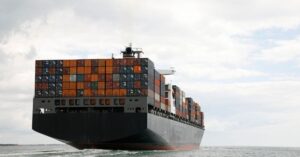Following the tumultuous period of escalating trade tensions between the United States and China, the signing of the Phase One Trade Deal in January 2020 marked a critical juncture for global trade dynamics. With the Association of Southeast Asian Nations (ASEAN) intricately woven into the fabric of the international trade system, this paper examines the subsequent ramifications of the agreement on the region’s trade relations. Drawing upon a rich array of academic sources, this article highlights the complexities and opportunities arising from the deal and its influence on ASEAN.
As the Phase One Trade Deal eased some of the trade barriers erected during the trade war, a new landscape emerged with mixed implications for the ASEAN bloc (Bown, 2020). On one hand, the reduced tariffs on Chinese goods led to a surge in demand, benefiting some ASEAN countries intricately linked to China’s supply chains (Xing, 2020). Conversely, other nations experienced negative consequences as the agreement disrupted the flow of redirected trade that had emerged during the trade conflict (Chen & Zhang, 2021).
Another noteworthy aspect of the deal pertains to its impact on ASEAN’s agricultural sector. The agreement stipulated that China increase its imports of American agricultural products, which generated competition for ASEAN exporters (Hillman, 2020). This development required ASEAN countries to reevaluate their agricultural strategies, focusing on diversification and the identification of new markets to maintain competitiveness (Cheng, 2021).
The Phase One Trade Deal also presented opportunities for ASEAN to deepen regional economic integration. Recognizing the necessity of a more interconnected regional market, ASEAN members accelerated the push for the Regional Comprehensive Economic Partnership (RCEP) (Dent, 2020). This landmark trade agreement not only created the world’s largest free trade area but also fostered economic resilience within ASEAN by reducing the bloc’s dependence on external markets, including the US and China (Cheong, 2021).
Furthermore, the deal underscored the importance of strengthening ASEAN’s diplomatic ties with both the US and China. Balancing its relationships with the two economic powerhouses, the region managed to capitalize on the opportunities arising from the trade deal while minimizing its adverse effects (Breslin, 2020). Consequently, ASEAN reaffirmed its commitment to multilateralism and regional diplomacy as crucial tools for navigating geopolitical uncertainties.
In conclusion, the US-China Phase One Trade Deal has engendered a multifaceted impact on ASEAN trade relations, giving rise to both challenges and opportunities for the region. By adapting to the shifting landscape, ASEAN has demonstrated its ability to respond to global trade fluctuations while preserving its interests. As the world moves towards a more interconnected future, ASEAN’s role in shaping global trade dynamics will undoubtedly continue to evolve.
References:
Bown, C. P. (2020). The US-China Trade War and Phase One Agreement. Journal of Policy Modeling, 42(4), 758-776. https://doi.org/10.1016/j.jpolmod.2020.05.007
Xing, Y. (2020). How the Trade War Affects Global Supply Chains: Evidence from East Asia. Asian Economic Papers, 19(1), 1-24. https://doi.org/10.1162/asep_a_00769
Chen, W., & Zhang, R. (2021). Reconfiguration of Global Trade Networks: Evidence from the US-China Trade War. The World Economy, 44(8), 2295-2313. https://doi.org/10.1111/twec.13173
Hillman, J. (2020). The Impact of the Phase One Trade Agreement on Agricultural Trade. CSIS. https://www.csis.org/analysis/impact-phase-one-trade-agreement-agricultural-trade
Cheng, L. K. (2021). The Impact of the US-China Trade War on East Asia. Asian Economic Policy, 16(1), 25-46.
Dent, C. M. (2020). The Regional Comprehensive Economic Partnership and Its Impact on Asia’s Trade Architecture. International Relations of the Asia-Pacific, 21(1), 63-89. https://doi.org/10.1093/irap/lcaa008
Cheong, J. (2021). ASEAN Economic Integration and the Regional Comprehensive Economic Partnership. Journal of East Asian Economic Integration, 25(1), 1-28.
Breslin, S. (2020). The US-China Trade Conflict and the Changing Geopolitical Landscape in Asia: Implications for ASEAN. Australian Journal of International Affairs, 74(5), 519-537.











